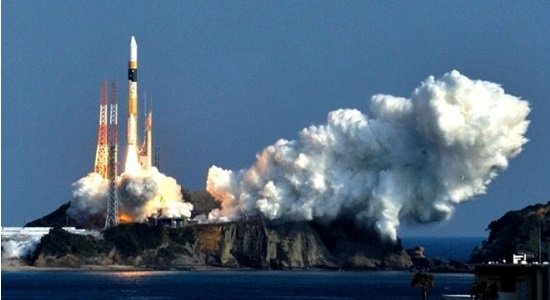Viet Nam to launch home-made satellites for earth observation
The country is working closely with Japan on its plan for four new satellites.
 |
| Japan's HTV-4 cargo spacecraft was launched into space, carrying Viet Nam’s micro satellite PicoDragon in 2013. (Photo from Viet Nam Academy of Science and Technology) |
Viet Nam plans to launch four earth observation satellites in the coming years, most of which will be manufactured in the country, the government said in a post on its website on Thursday.
The Viet Nam National Satellite Center (VNSC) plans to use a Japan’s Epsilon missile to bring MicroDragon, a 50-kilogram satellite, into orbit in early 2018.
The satellite is developed by VNSC researchers under instruction of professors from a group of Japanese universities. The main missions of MicroDragon are assessing coastal water quality to develop aquaculture and locating living resources.
VNSC is scheduled to launch the NanoDragon, weighing six kilograms, in 2019. The earth observation satellite will be in charge of providing support for an automatic system for identifying sea vessels and monitoring of fishing boats.
Two other radar earth observation satellites, the LOTUSat-1 and 2, about 600 kg in weight each, are set to be launched by 2022, the government said. The LOTUSat-1 will be manufactured by Japan with Viet Nam's assistance. The other will be manufactured by Vietnamese engineers.
The first remote sensing made-in-Viet Nam satellite, the PicoDragon, was successfully launched into space in 2013. The design, manufacturing and test of the earth observation satellite were all done by Viet Nam.
Viet Nam’s first telecom satellite VINASAT-1 was put into orbit in 2008 and the second telecom satellite VINASAT-2 in 2012. Both are invested by the state-owned group Viet Nam Posts and Telecommunications (VNPT).
VNSC has sent 36 young engineers to study satellite technology in Japan and established cooperation in training with five Japanese universities.
(Source: VNExpress International)